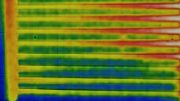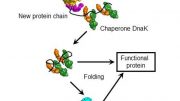
A recent study explored a potential connection between certain amino acids and increased dementia risk linked to PM2.5 air pollution exposure. While not conclusive, the research suggested that high homocysteine or low methionine levels may interact with pollution to elevate dementia risk, emphasizing the need for a deeper understanding of the mechanisms behind air pollution’s impact on the brain.
Elevated levels of amino acids related to vitamin B may be associated with the risk of dementia linked to a specific type of air pollutant known as particulate matter, according to a study recently published in Neurology, the medical journal of the American Academy of Neurology. Although the study does not establish a causal relationship between pollution or amino acids and dementia, it indicates a potential connection among them.
Researchers looked at fine particulate matter, PM2.5, which consists of pollutant particles of less than 2.5 microns in diameter suspended in air. They also looked at two amino acids, methionine and homocysteine. Methionine is an essential amino acid found in foods such as meat, fish, dairy, beans, and eggs and is involved in normal brain functions. Homocysteine is an amino acid produced in the cells that can be transformed to methionine through a reaction that requires both vitamin B12 and folate, a nutrient important in red blood cell formation and for healthy cell growth and function.
“Previous studies have found a link between air pollution and dementia risk, but we don’t have a good understanding of the mechanisms through which air pollution impacts the brain,” said study author Giulia Grande, MD, PhD, of the Karolinska Institutet in Stockholm, Sweden. “In this study, we found that two types of vitamin B-related amino acids played a role in increasing or decreasing the risk of dementia caused by air pollution.”
For the study, over 2,500 adults with an average age of 73 living in central Stockholm were followed for up to 12 years. Of these, 376 people developed dementia.
Participants completed interviews and blood tests, along with questionnaires on physical activity and diet habits.
Researchers then calculated annual average levels of PM2.5 at the home addresses of the participants. The people who developed dementia had an average exposure to PM2.5 pollution of 8.4 micrograms per cubic meter (µg/m3), compared to 8.3 µg/m3 for the people who did not develop dementia. These annual average levels of PM2.5 are low compared to the average levels of PM2.5 in the rest of Europe, which is 13.8 μg/m3.
After adjusting for several factors that affect a person’s risk of dementia including age, sex, smoking, and education, researchers found that the risk of dementia increased by 70% for every one µg/m3 increase of PM2.5 exposure during the five years before the start of the study.
Then researchers looked at whether the impact of air pollution exposure on dementia was affected by the amino acids.
Overall, researchers found that about half of the increased risk of dementia due to PM2.5 was due to an interaction between air pollution and high homocysteine levels or low methionine levels.
“Our results indicated that raised homocysteine levels and low methionine values played a role in determining the dementia risk related to air pollution, but also showed that a substantial direct effect of air pollution on dementia exists suggesting that air pollution affects the development of dementia through multiple pathways,” Grande said. “This highlights the need for further research into the exact biological mechanisms behind the brain damage of air pollution.”
Reference: “Association of Long-term Exposure to Air Pollution and Dementia Risk – The Role of Homocysteine, Methionine, and Cardiovascular Burden” by Giulia Grande, Babak Hooshmand, Davide Liborio Vetrano, David A Smith, Helga Refsum, Laura Fratiglioni, Petter Ljungman, Jing Wu, Andrea Bellavia, Kristina Eneroth, Tom Bellander and Debora Rizzuto, 13 July 2023, Neurology.
DOI: 10.1212/WNL.0000000000207656
A limitation of the study was that it included only the Kungsholmen district of Stockholm, which is small, so comparisons regarding air pollutants were limited.
The study was funded by Swedish Ministry of Health and Social Affairs, Swedish Research Council, Swedish Research Council for Health, Working Life and Welfare and several Swedish foundations.









very interessant and useful of your articles
interessant and useful
Something is wrong here:
“PM2.5 pollution of 8.4 micrograms per cubic meter (µg/m3), compared to 8.3 µg/m3 for the people who did not develop dementia.”. The difference is 0.1 µg/m3 …